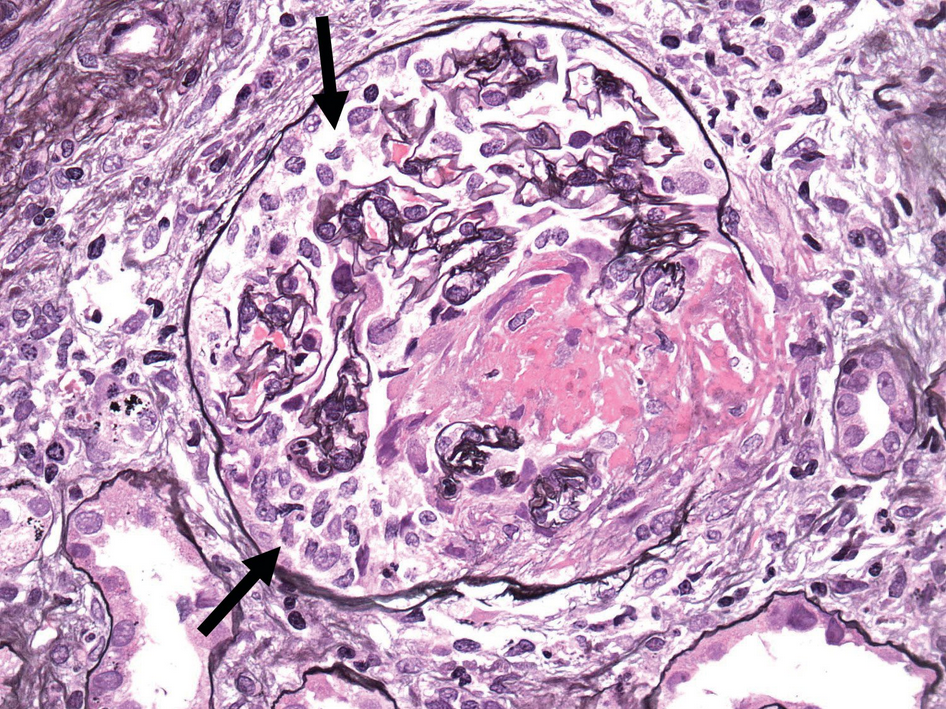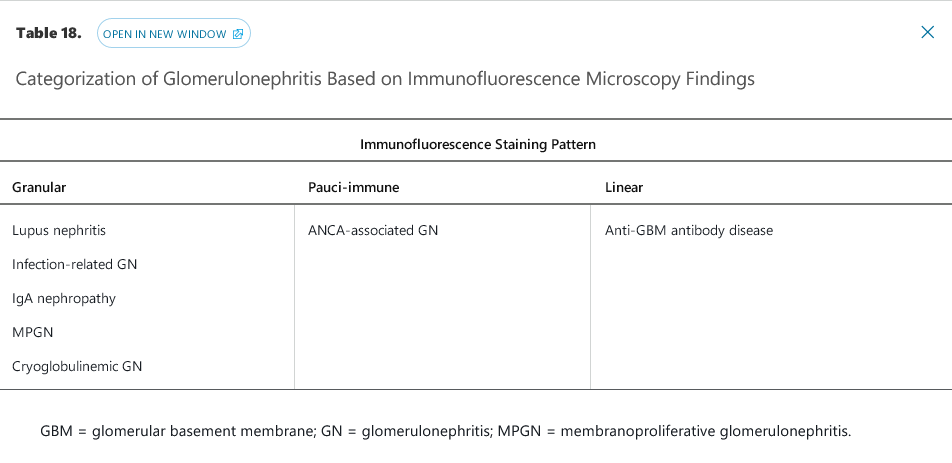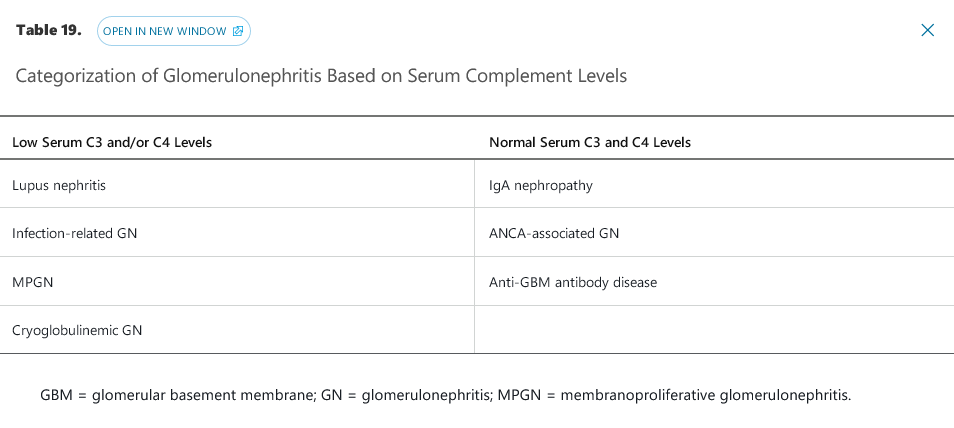RPGN
- related: Nephrology
- tags: #nephrology
Rapidly Progressive Glomerulonephritis
Epidemiology and Pathophysiology
Rapidly progressive glomerulonephritis (RPGN; also known as crescentic glomerulonephritis) is not a specific disease; rather, RPGN is a clinical entity that can be caused by multiple diseases and manifests as (1) at least a 50% decline in glomerular filtration rate over a short period (usually days to weeks) with (2) pathology findings of extensive glomerular crescents (Figure 13). Crescents signal focal rupture of the glomerular capillary walls, the most severe glomerular damage that can be seen on light microscopy. This rupture allows accumulation of fibrin and fibronectin in the urinary space, where they activate de-differentiated glomerular parietal epithelial cells to proliferate, surround, and compress the glomerular tuft.
 A glomerular crescent (arrows), named for its moon-shaped appearance, signals focal rupture of the glomerular capillary walls.
A glomerular crescent (arrows), named for its moon-shaped appearance, signals focal rupture of the glomerular capillary walls.
Clinical Manifestations
RPGN typically presents with macroscopic or microscopic hematuria, erythrocyte casts, varying ranges of proteinuria, and AKI that can lead rapidly to dialysis dependence.
Diagnosis
The diagnosis of all forms of glomerulonephritis is traditionally made by kidney biopsy, which can distinguish among the three major categories of glomerulonephritis (Table 18) and their associated etiologies. Serologic testing (for example, ANCA, anti–glomerular basement membrane antibodies, antinuclear antibodies) aids in the diagnosis. An alternative classification scheme for glomerulonephritis is based on low versus normal complement levels (Table 19). Although any form of glomerulonephritis can display an aggressive disease course that would fit the definition of an RPGN, the most common etiologies seen in RPGN cases are ANCA-associated glomerulonephritis, lupus nephritis, and anti–glomerular basement membrane glomerulonephritis.


Treatment and Prognosis
Treatment is based on the specific etiology of RPGN. If untreated, RPGN is expected to progress to dialysis dependence in a matter of days to weeks. If treated early, lesions can often be reversed, although CKD is often a lingering consequence.